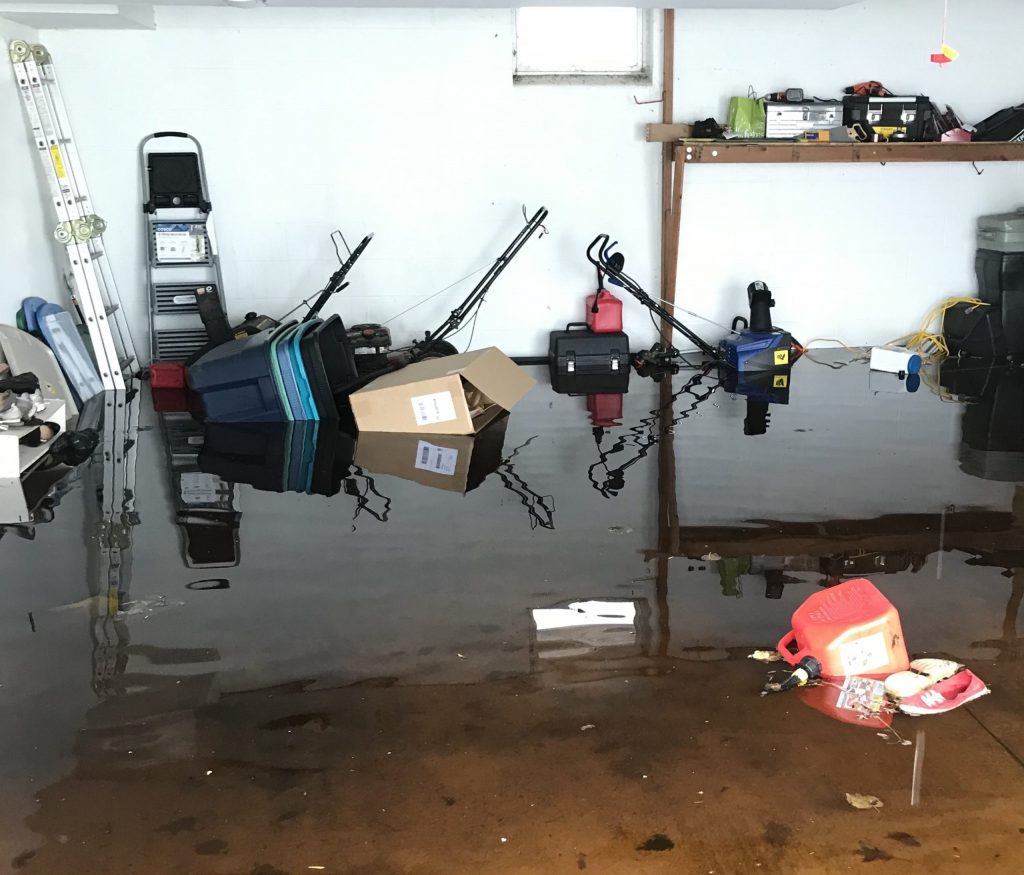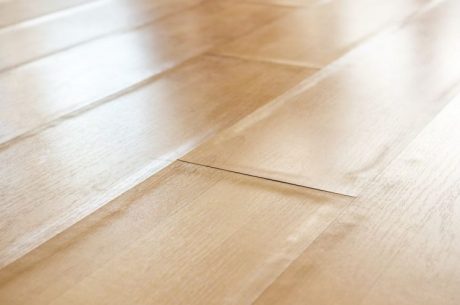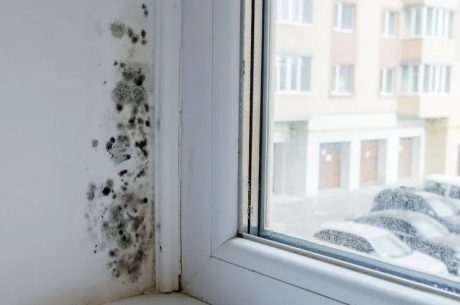Floods can occur almost any time of the year. In the beginning of spring, flooding becomes more of a concern in areas where snow thaws and thunderstorms occur. In Suffolk and Nassau County, NY, the threat of flooding increases as the snow melts and spring thunderstorms become more frequent. Coastal areas, low-lying neighborhoods, and those near rivers or bays, such as Huntington, Islip, Long Beach, and Freeport, are especially vulnerable to seasonal flooding due to a combination of rain, snowmelt, and rising groundwater levels.
When excess water accumulates around your home, your garage is one of the first areas that can get flooded, possibly causing thousands of dollars in damage. In this article, you will learn about garage flooding prevention step by step.
Tips to Prevent Garage Flooding
Maintain Weatherstripping Around the Garage Door
Weatherstripping (such as self-adhesive tape and rubber and vinyl stripping) provides protection against water intrusion and helps maintain the temperature in your garage. The seal at the bottom of your garage door is enough to protect your garage against minor flooding.
However, weatherstripping will wear off after years of exposure and should be replaced regularly. Check the stripping for cracks or other signs of damage and replace it if necessary. In coastal areas like Huntington, Islip, and Long Beach, salt air and humidity can cause weatherstripping materials to degrade more quickly, so it’s essential to inspect and replace them more often.

Check Your Foundation for Cracks and Damage
Although some of these cracks are barely visible, they provide a space for water to seep through and make your home more vulnerable to flooding.
Inspect your foundation for cracks and seal them with waterproof paint or a vinyl concrete patch. For larger cracks, call a professional contractor to ensure they are properly sealed and prevent further damage. Areas such as Bay Shore, Freeport, and Lindenhurst, where groundwater levels can rise during heavy rains, can especially benefit from regular foundation inspections to avoid water seepage.
Improve Drainage Around Your Home
When the street gutters and drains are overwhelmed with floodwater, your home becomes vulnerable to flooding. This is why having adequate drainage on your property is important.
Install French drains in front of your garage (or along your driveway) that can transport excess water away from your home’s foundation. Additionally, ensure that your yard is graded properly to direct water away from your home.
Clean your gutters and downspouts regularly to prevent blockages that could cause water to overflow and pool around your home. In Nassau County, especially in areas like North Hempstead, Long Beach, and parts of Garden City, frequent rainstorms can overwhelm drainage systems. Installing proper drainage solutions and maintaining them can help protect your home from water accumulation around the foundation.
Install Flood Vents
During a severe storm, the chance of flooding increases, and your garage door usually can’t withstand the force exerted by powerful floodwaters. Flood vents allow floodwater from outside to flow through your garage unobstructed.
Although this might seem like a bad idea, flood vents are designed to protect your home’s living space from water damage by allowing your garage to flood, thus equalizing the water pressure inside and outside the garage and preventing structural damage. Given that many areas on Long Island, such as the South Shore in Nassau and Suffolk Counties, are near flood-prone zones, flood vents are a practical consideration for homeowners who want to safeguard their property from storm surge damage.
Use Flood Barriers or Sandbags
Install flood barriers around your property. They act as short dams that expand when in contact with water and help stop low-level flooding efficiently.
When used properly, sandbags can direct water away from your home. Place them strategically around entrances and other vulnerable areas to create a barrier against floodwaters. Make sure to stack sandbags in a staggered pattern to maximize their effectiveness. Residents in coastal areas like Great Neck, Rockville Centre, and Patchogue should have sandbags on hand during storm season as floodwaters from rising tides and storm surges can cause localized flooding.
Raise Electrical Components
If possible, elevate electrical outlets, circuit breakers, and other electrical components in your garage to at least one foot above the potential flood level. This will reduce the risk of electrical damage and hazards during a flood. Ensure that any electrical work is done by a licensed electrician to comply with safety standards.
This is especially important in flood-prone areas near the waterfront, such as parts of Long Beach, Huntington, and Southampton, where elevated storm surges can cause significant damage.
Seal Garage Floor
Applying a waterproof sealant to your garage floor can provide an additional layer of protection against floodwater. This sealant can help prevent water from seeping through the concrete and causing damage to your garage and its contents.
Be sure to follow the manufacturer’s instructions for application and reapply as necessary to maintain its effectiveness. In flood-prone areas along the South Shore of Long Island, such as Fire Island and Merrick, sealing your garage floor can add an extra layer of defense against floodwater infiltration.
Install a Sump Pump
Consider installing a sump pump in your garage, especially if it is prone to flooding. A sump pump can help remove water that accumulates in your garage, preventing it from causing extensive damage. Make sure the sump pump is connected to a reliable power source and test it regularly to ensure it is working properly.
If your garage is in a lower-lying area such as in East Hampton or West Babylon, where groundwater levels can rise after heavy rains, a sump pump can be an essential addition to keep your garage dry.
Protect Your BasementThe basement is also an area of your home that is highly prone to flooding. Consider installing a sump pump to remove water that accumulates in your basement. Additionally, ensure that basement windows are properly sealed and use window well covers to prevent water from pooling around them.For homeowners in areas like Syosset, Smithtown, and Rockland, where the combination of rainwater and rising tides may affect ground levels, safeguarding your basement from flooding is crucial.
For Flood Damage Cleanup, Contact Your Local PuroClean of Huntington!
If you’re facing garage flooding and need repair or mold remediation services, don’t hesitate to contact PuroClean of Huntington at (631) 402-9700 office. Our highly trained technicians are well-equipped to handle all your water damage and mold-related issues. We’re committed to ensuring your home is safe and restored to its pre-loss condition, giving you the peace of mind you deserve.




 PuroClean of Huntington
PuroClean of Huntington